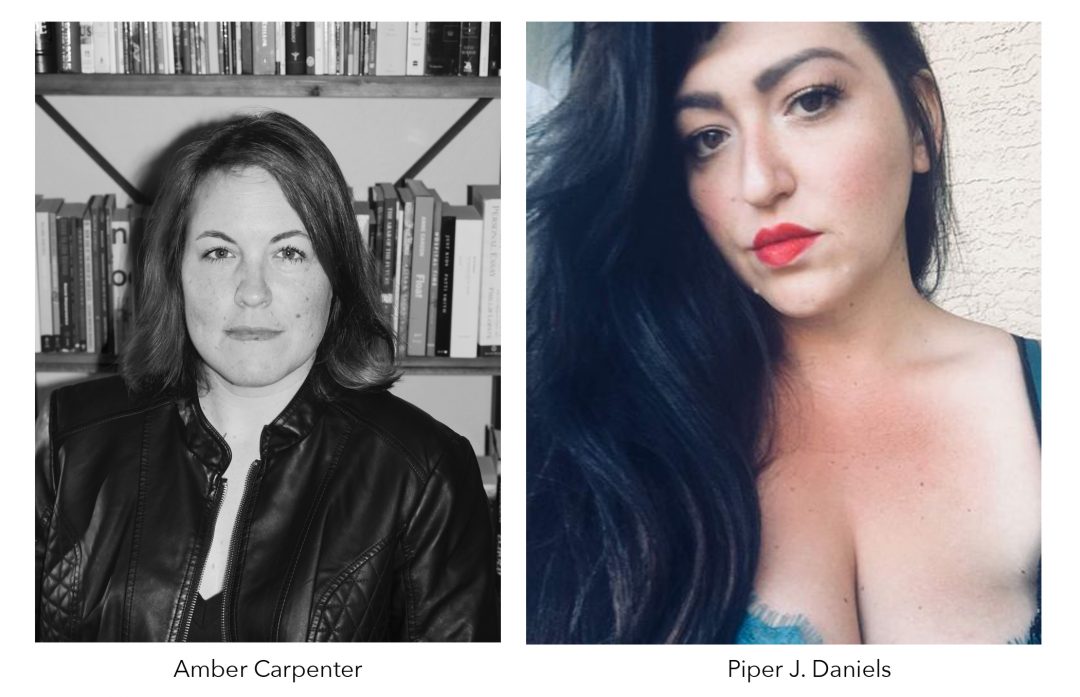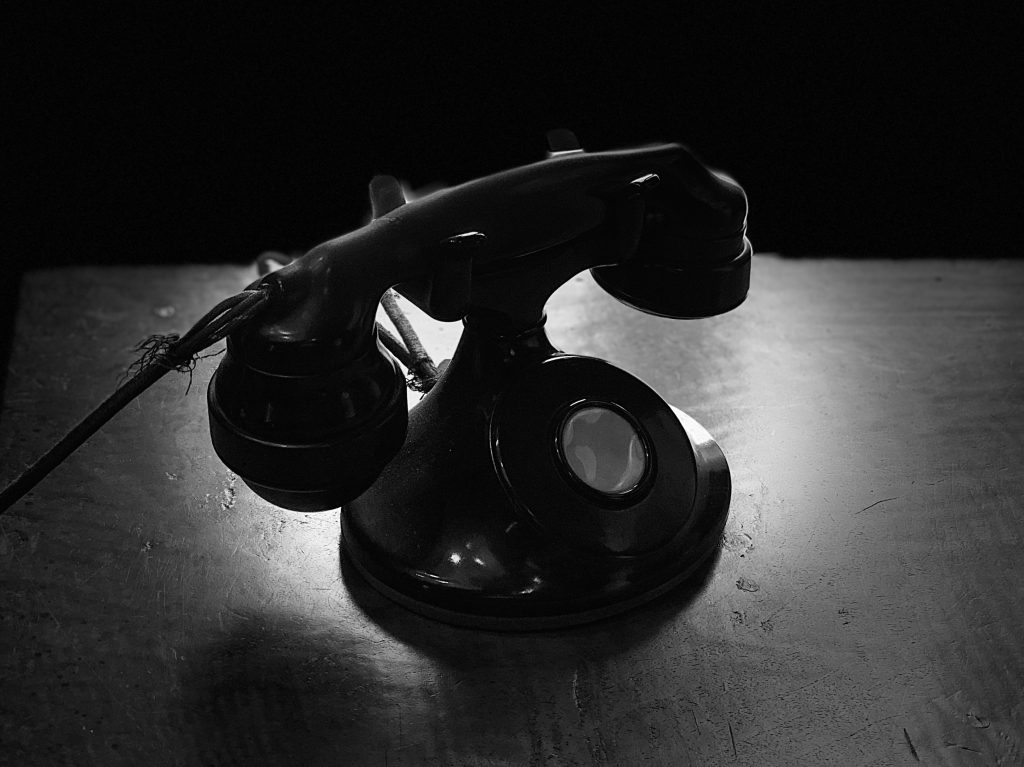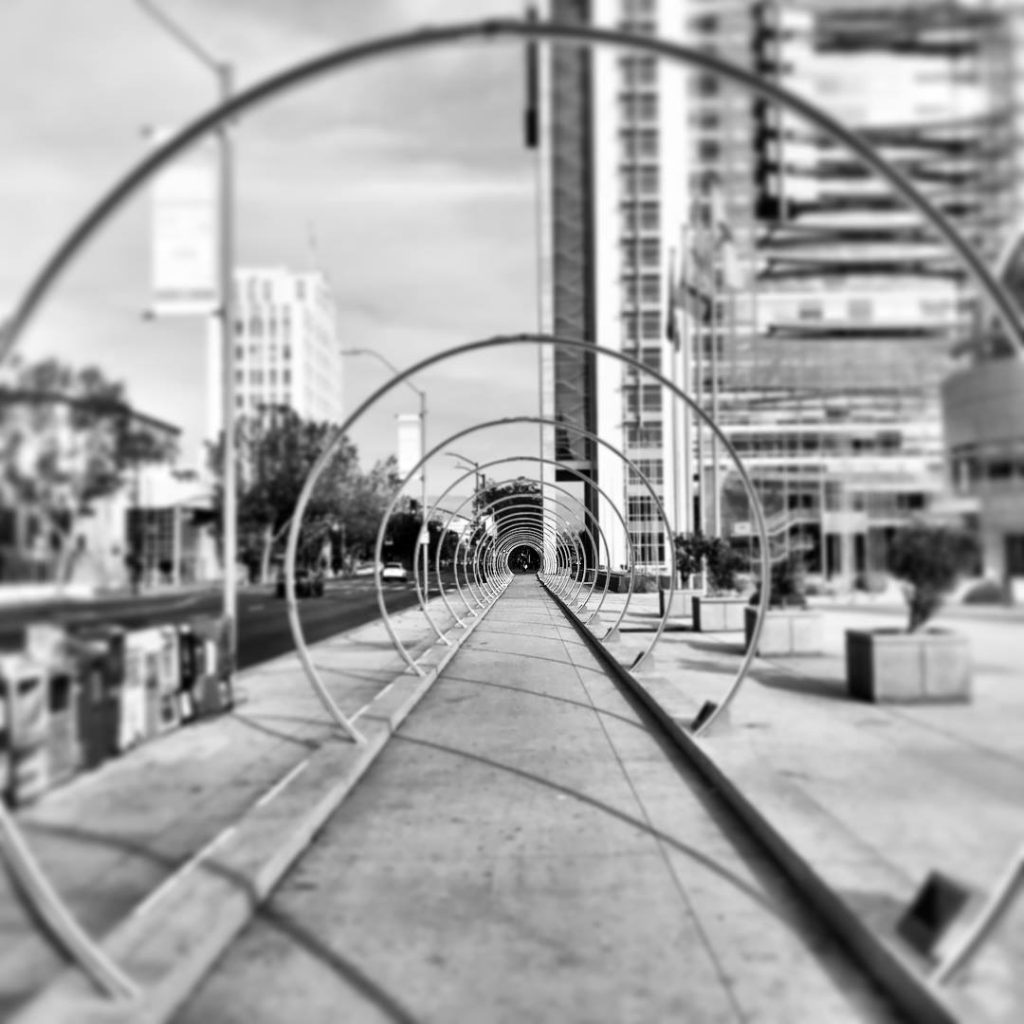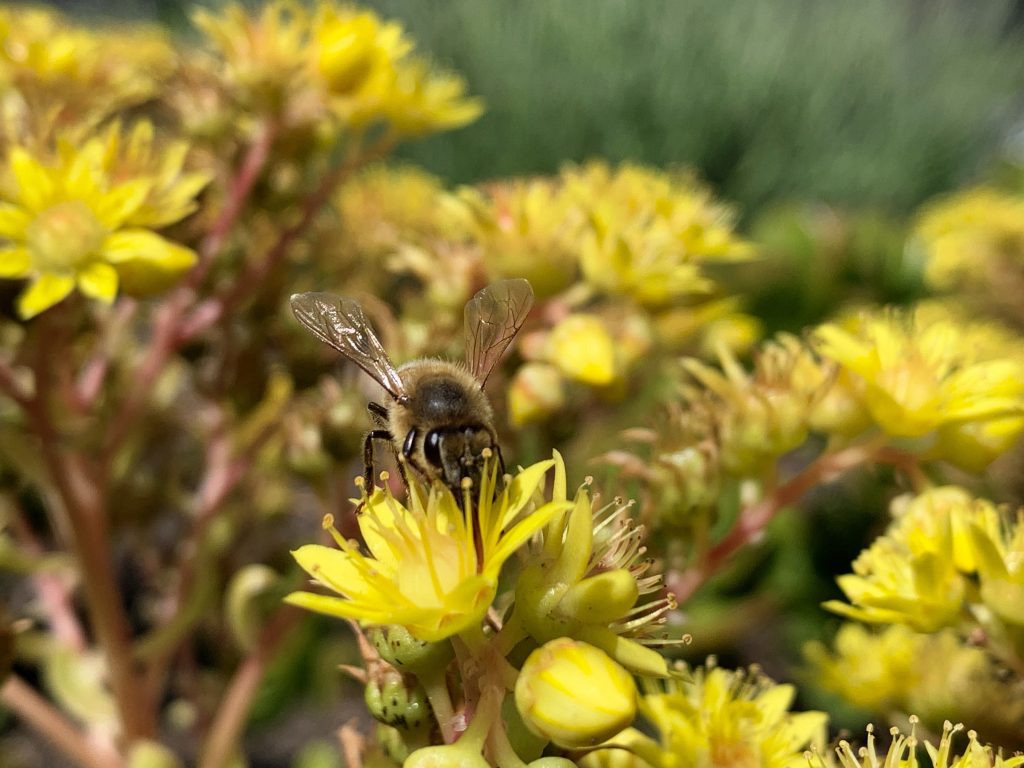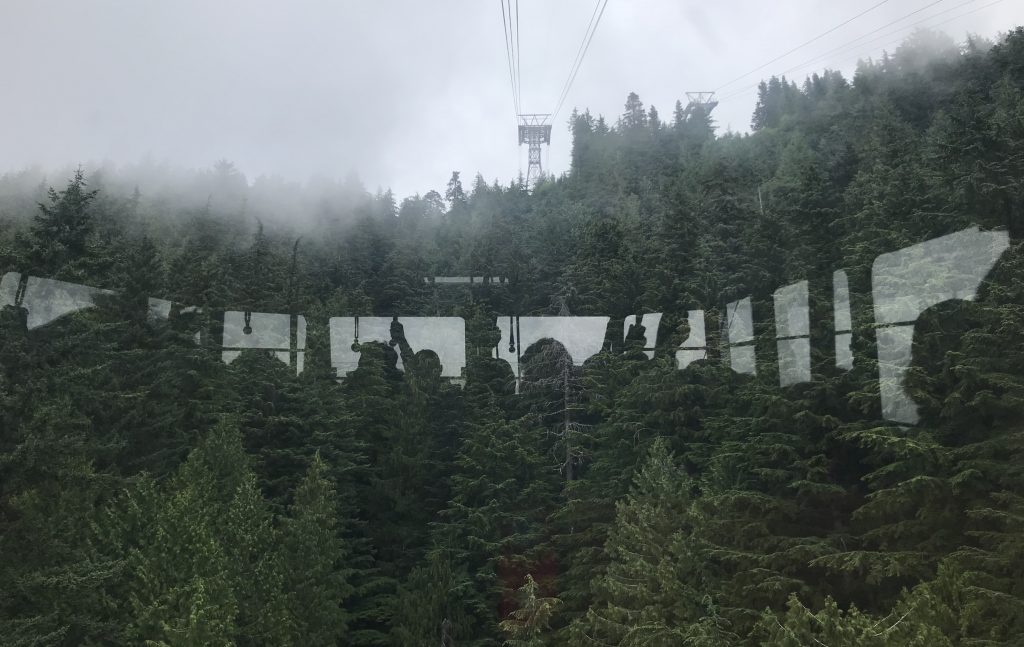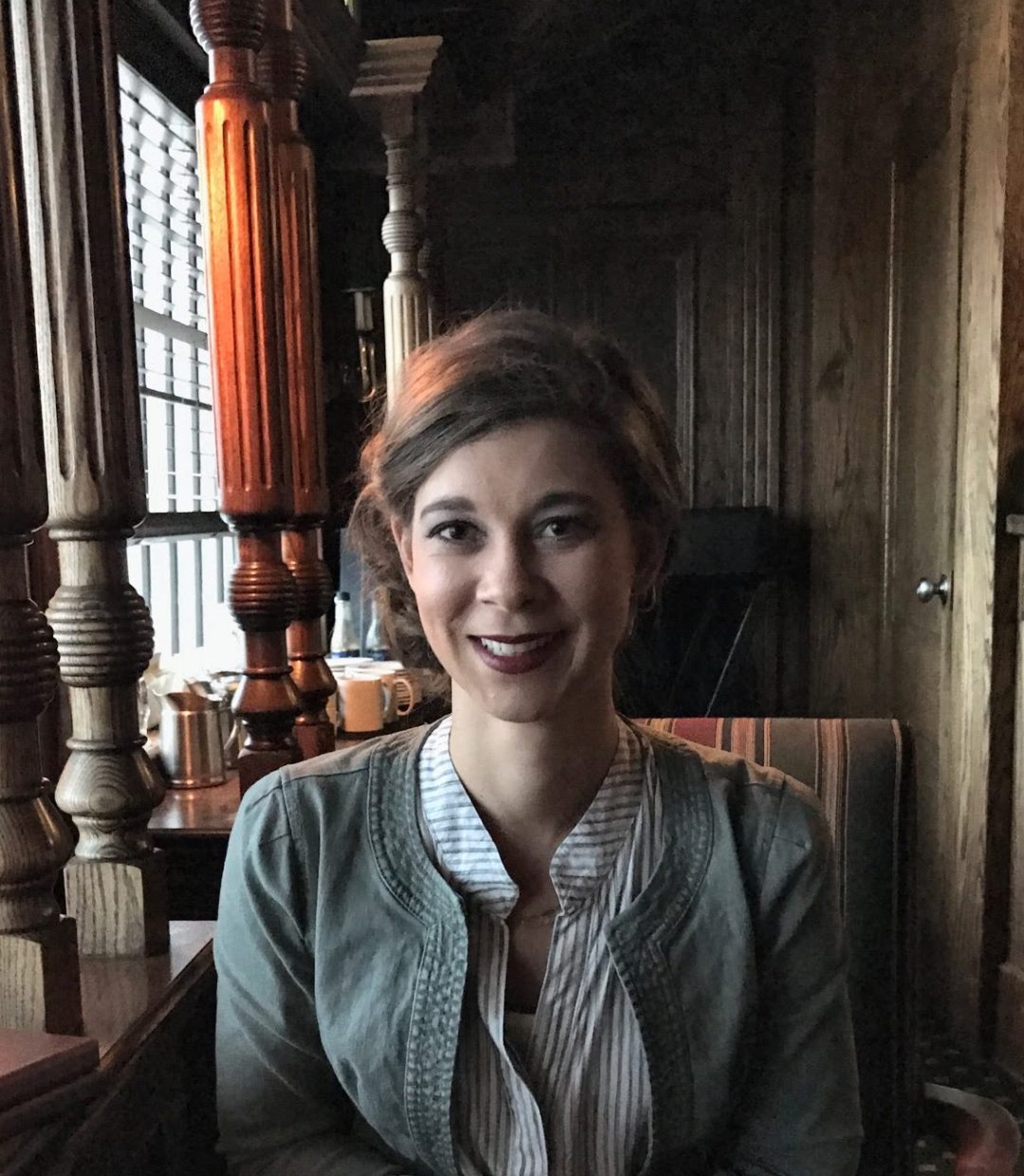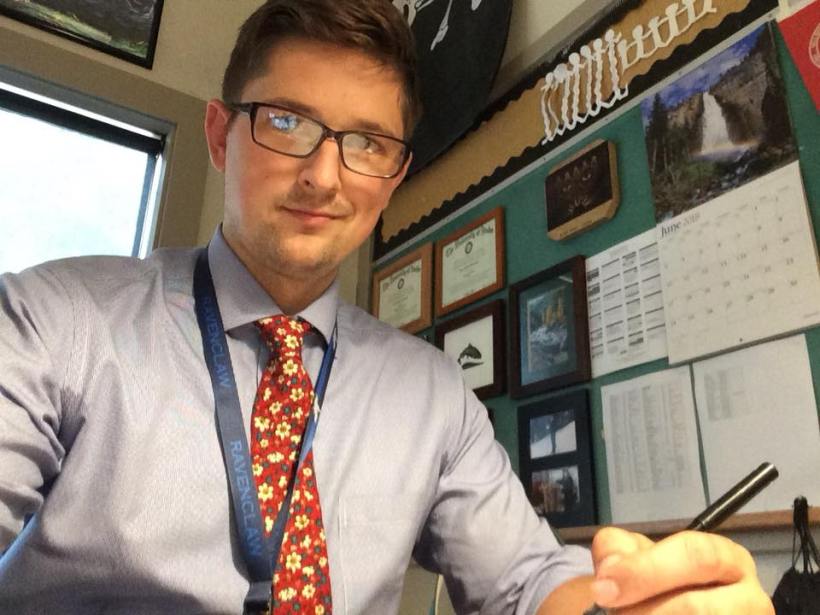On Not Eating
It is far harder to kill a phantom than a reality. . . . But it was a real experience.” —Virginia Woolf
There are necessary evils that exist in everyone’s life.
Here are a list of mine:
The ACT. Standardized testing. Mothers-in-law. Menstruation. Pregnancy. Morning sickness. Sidewalk cracks. Wearing a bra. Sleep. Taking a shower. Buying makeup. Haircuts and mowing the lawn (which are essentially the same thing). The government. Work. Welfare. Walmart. The middle console in my husband’s truck. Money. The stairs by the Smith Fieldhouse on BYU campus. Exercising an hour or more every day.
Body Image and Eating Disorder Group therapy. Individual therapy. Dietitian meetings. Stepping onto a scale backwards. My dietitian. Meal logging. Breakfast. Lunch. Dinner. And all the balanced snacks they tell me to eat in between. Cooking. Deciding what to eat. Carbs. Sugar. Breads. Pastas. Any kind of sauce. Social events with free food. Eating at restaurants. Eating with people. Eating in general.
“Eating disorders can be recognized by a persistent pattern of unhealthy eating or dieting behavior that can cause health problems and/or emotional and social distress.”
I had a friend in high school who was as skinny as all of the cliché metaphors for skinniness. She never had to worry about eating vegetables and fruits and whole grains or going to the gym on a daily basis. One time, she told us that at a regular checkup the doctor told her that she needed to gain weight.
What a mind blowing concept: being told that you need to gain weight. Who ever knew that being too skinny was unhealthy? Not me. The gluttonous being inside of me stirred with jealousy as I imagined what it would be like to need to gain weight. I conjured up images of gallons of my favorite ice cream flavors ready at my fingertips, warm gooey cookies and thick rich brownies decorating the table in front of me, cheese fries and onion rings and pizzas bigger than my head. I thought that needing to pack on some pounds sounded like the best thing in the world—
until it happened to me.
I never thought I had an eating disorder—that was some mythical disease that plagued dramatic high school girls who wanted to be small enough to fit into their cheer uniforms. Not me. Not a college student, return missionary, faithful church-goer, commandment keeping, God-fearing girl like me.
Over the course of six months, I lost about twenty-five pounds.
After she was diagnosed with “hysteria” and sent to a mental institution, Anne Sexton once said, “I thought psychotic was someone else, but I’m still me.” And two years ago, that’s how I felt (still feel). I didn’t realize how sick I was (am—and I still don’t see it most times). I thought my daily menu was something normal people (and by normal people I mean those who have not yet been broken by the chains of disordered eating) ate as well.
My menu was as follows:
Breakfast: a single banana (no more)
Lunch: ½ a carrot and ½ a cucumber, both peeled and cut into slices; one apple, sliced; and, for my main course, a varying flavor of yogurt of my choice
Dinner: one whole bag of frozen broccoli and one grapefruit, peeled like an orange
Dessert: one spoonful of thick honey
Yes, I literally ate this same thing every. single. day. No, I did not have an eating disorder. People with eating disorders don’t eat, and I ate.
“Even if a person does not meet the formal criteria for an eating disorder, he or she may be experiencing unhealthy eating behaviors that cause substantial distress and may be damaging to both physical and psychological health.”
But that mindset was my eating disorder thinking for me. Those who suffer from eating disorders have a hard time distinguishing themselves from their distressed and skewed mindsets. They think they are being healthy. They think they are safe. They think that they are not only normal, they are better than normal, and that nothing is wrong.
I fell into this trap (and I still do).
I didn’t know something was wrong with me and sometimes (usually) I still believe that there’s not. This comes partially from the blatant ignorance that exists in our world.
Eating disorders are a mental-health taboo. Depression and Anxiety reign the mental-illness kingdom; eating disorders are the deprived princess locked in the tower (ironically, starving). Depression and Anxiety are recognized as viable in the world of overall health. These two sicknesses inhibit normal behavior and the ability to function—something understood by most. It is a universal truth. There is a sense of empathy when it comes to anxiety and depression. They invoke in on-lookers’ compassion and a desire to understand and to draw closer to the one suffering so they feel supported and uplifted and never isolated or alone. Eating disorders generally provoke discomfort and awkwardness and misunderstanding. And the soul recoils back into the caves of comfort and normalcy, not this bizarre anomaly that rejects nourishment. There is no awareness (as in, being aware that they are common and actually exist) for anorexia or bulimia or binge eating or compulsive exorcising or orthorexia. In fact, the world praises individuals who skip meals or cut calories or spend two hours at the gym every day and never ever EVER eat sweets. And so patients of these illnesses live in confusion and the delusion that what they are doing is right and praiseworthy and healthy and even moral.
Lately, it seems like almost everyone admits to having some form of anxiety or depression. It comes up in church meetings, lunchtime discussions, get-to-know-you games and in a comment from someone in every single one of my university classes. But at least 30 million people of all ages and genders suffer from an eating disorder in the U.S. So where are those 30 million people at church, lunch, get-to-know-you games, and university course discussions?
I don’t want to, by any means, demean the painfully real diseases of anxiety and depression. I understand the torture they inflict and I respect and appreciate the attention that they receive with open arms. I rejoice that our society treats mental-illnesses with a newfound seriousness and respects them as a reality instead of a psychotic mess to clean up and shove in a room and call it fixed. I only want the same for my own mental illness. It’s time to share the awareness. Time to divide up the sympathy.
I realize there could potentially be a risk of victimizing myself throughout this essay. If it ever seems as if I am victimizing, know that I am only falling prey to myself. That is the only victimization I aim to draw attention to in this essay.
GLOSSARY OF EATING DISORDERS:
Anorexia Nervosa: an eating disorder characterized by an abnormally low body weight, an intense fear of gaining weight and a distorted perception of weight. People with anorexia place a high value on controlling their weight and shape, using extreme efforts that tend to significantly interfere with their lives. Between 0.3 and 1% of young women have anorexia nervosa (which makes anorexia as common as autism).
Bulimia Nervosa: a serious, potentially life-threatening eating disorder. People with bulimia may secretly binge—eating large amounts of food with a loss of control over the eating—and then purge, trying to get rid of the extra calories in an unhealthy way. Around 1 to 3% of young women have bulimia nervosa.
Binge Eating: a serious eating disorder in which you frequently consume unusually large amounts of food and feel unable to stop eating. Almost everyone overeats on occasion . . . but for some people, excessive overeating that feels out of control and becomes a regular occurrence crosses the line to binge-eating disorder. Around 3% of the population has binge-eating disorder.
Orthorexia Nervosa: an obsession with proper or ‘healthful’ eating; an inability to eat anything but a narrow group of foods that are deemed ‘healthy’ or ‘pure.’ People with orthorexia become so fixated on so-called ‘healthy eating’ that they actually damage their own well-being.
Eating Disorder Not Otherwise Specified: an eating disorder that does not meet the criteria for anorexia nervosa or bulimia nervosa. Individuals with EDNOS usually fall into one of three groups: sub-threshold symptoms of anorexia or bulimia, mixed features of both disorders, or extremely atypical eating behaviors that are not characterized by either of the other established disorders. Between 4% and 20% of young women practice unhealthy patterns of dieting, purging, and binge-eating.
Currently, about one in 20 young women in the community has an eating disorder.
Eating disorders, like most mental illnesses, are complicated. There are a heaping pile of combinations to be contracted—binge, restrict; binge, purge, restrict, repeat; restrict, exercise; binge, exercise, purge restrict; etc. I am impaired by restriction, over-exercise, and orthorexia—which means any food that I or the world deem “unhealthy,” I avoid, run from, condemn, purge, protect my precious body that I deprive so constantly. I thought I held a conglomeration of these different symptoms, rendering myself technically “undiagnosable.”
But last week, in the office of my therapist that I thought I didn’t need anymore, I was diagnosed with anorexia.
My therapist always tells me there isn’t one sole reason that creates an eating disorder. She tells me it’s created from a myriad of different things, kind of like a recipe. I wonder what my recipe would be:
MAURI’S ANOREXIA
Prep time: 7 years
Baking time:
Ingredients:
2 cups of fear of gaining weight
1 cup perfectionism*
1/3 cup of fear of losing control
1 Tbl. of her sophomore health class that taught her about calories
1 tsp. of that time her cousin Sadie called her fat
2 tsp. of all the people who told her sister missionaries gain so much weight**
½ tsp. of when people comment on how much she is eating (“so much” or “so little”)
Restricting and purging to taste
*Can substitute perfectionism with the feeling of being unable to do anything right except eating healthy and exercising.
**Another tasty variation includes replacing this with all the people who talk about “wife-weight” (the weight women gain shortly after marriage).
Directions:
- Combine all ingredients (if the batter tastes too bland, add a few pinches of over-exercise or orthorexia for flavor) and mix on speed 4. If this is being made after eating out or going to a social even with free food, increase speed to 5.
- Pour into a pan (size of your choice) and bake at 350 F for 45 minutes (or as long as it takes for the anxiety to set in). Again, if this is being made after eating out or going to a social event surrounding food, increase temperature to 425 F.
- Take out of oven, and let cool. (This may take overnight or even a couple of days).
- Cut into little pieces, put it in a storage container, and hide it in the fridge.
- Buy a store bought dessert instead and show everyone that you are perfectly normal and nothing is wrong.
(If the batter tastes too bland, add a few pinches of over-exercise or orthorexia for flavor.)
“Anorexia nervosa has one of the highest overall mortality rates and the highest suicide rate of any psychiatric disorder. The risk of death is three times higher than in depression, schizophrenia or alcoholism and 12 times higher than in the general population.”
The diagnosis, honestly, hit me like a bullet train. Thoughts paced around inside my brain, trying to logically cope with my new identity: But I don’t look like I have anorexia. But I eat. But I weigh more than a hundred pounds. But I eat. But I eat. I eat. But. Eat. But. And it made my sickness feel more serious, more real, more commonly understood than “eating disorder not otherwise specified.” And yet, the thing that still ran through my head while all the other thoughts took leisurely strolls was: don’t make me eat more, don’t make me gain weight, I don’t need to, I don’t want to.
“Anorexia is the 3rd most common chronic illness among adolescents, after asthma and obesity.”
I remember the first time that I realized that food makes you fat. I mean, I always knew that it did—it’s pretty obvious, right?—but not for me. I always thought that I was safe from that slippery slope. But it was in my health class during my sophomore year that I began to become conscious of the ever controlling calories. My teacher (a gorgeous former cheerleader that all of the pimply boys in the class swooned over) pulled up pictures on a PowerPoint to show us how many calories were really in the popular dishes at all of my favorite local restaurants. I think it was when she showed us how many calories were in the chicken crisper dish at Chili’s that I realized that maybe my calorie intake was just too much. I ate out a lot, and when I ate out, I didn’t really care what it was I was eating- I just got what sounded delicious. With each slide I sunk lower and lower into my seat and guilt and shame began to sink their nails into my exposed mind. After that I went home and realized that the information I read on the cereal box when I was bored during breakfast in the morning was actually telling me how many of those pesky, fat building calories I was eating after my fourth bowl of Honeycomb or my third helping of Kraft mac and cheese. This sparked my obsession with counting calories. I let it consume me anything labeled over 200 calories I slowly put back on the shelf and turned for something else.
“Before the nineteenth century, behaviors now considered to be symptoms of eating disorders were socially accepted, perceived as a manifestation of holy behavior. In medieval Europe, a large number of nuns adopted ascetical practices, including strict starvation, in order to reach unity with Christ. Similarly, in the pre-Victorian and the Victorian era, so-called ‘fasting women’ were admired by the rest of society and considered to be an object of curiosity by doctors and scientists.”
But I never thought that I would ever cower at even the thought of food. Yet here I am—on date nights with my husband taking thirty minutes to look over the menu and decide what to order, constantly touching my stomach to see if there’s been any added bulge or sneakily googling calories on my iPhone to make sure I hit under 1,200. I usually fly right past the appetizers, entrees, pastas, pizzas, sandwiches, soups, and aim straight for the salads. Anything that won’t stick, ED tells me.
Sometimes deciding takes longer, though. Usually that’s when I’m battling in my head between what I actually want and what actually sounds delicious, and what I won’t regret later. Once, on a date with my now husband at Malawi’s, I stood in line staring up at the menu for twenty minutes going back and forth between the pizza I was eyeing and the salad that sounded okay, but would save me from the guilt and shame I knew I would later feel. The girl at the cash register stared at me like I was a freak. I even walked up to order once and second guessed myself as I was speaking. Literally twenty minutes and I finally gave in.
I ordered the salad.
My family, similar to most families, likes to revolve life around food. At family gatherings, food is a constant conversation—delicious food, disgusting food, buffets and foreign food, food memories, food traumas, food discoveries, food, food, food. Every first Sunday of the month we gather for an extended family dinner and the more food, the better. Funerals are followed by food. Weddings are followed by food. Gatherings are better attended depending on the food that is served.
At a family gathering a few years ago, my aunt sat at a table with my cousins and me and, as we returned to our seats with plates toppling over from the weight of salads and meats and desserts, she asked us, jokingly, “So, no problems with eating disorders in this family then, huh?”
I shook my head, stuffing my face full of Doritos and pasta salad and said, “No way.”
Sometimes I can’t help but think God has an ironic sense of humor.
I remember that same aunt telling me once about the clients she had previously worked with. For ten years, she worked at a counseling center for people who have eating disorders. Sometimes, she said, they would have to teach those who had eating disorders how to eat again. I remember not understanding exactly what she meant, and imagining a comical scene of a grown adult relearning how to use a fork and spoon and knife: explaining how their hand should wrap around the thin, metal neck of the fork, how their hand should pull the knife backward and forward with the correct amount of pressure to slowly descend through the food, how the spoon must be balances so precariously as it is brought to the mouth so as not to spill the precious contents on the way.
I laughed to myself, quietly and humorously judging those that have gone through this school of learning.
But learning how to eat again has nothing to do with how to properly use utensils. And there is nothing humorous about it.
The mind is a complicated vessel. Because I could eat more and, yes, that would solve the bruises I get when my husband puts his hand on my knee or the brittleness of my bones or the way my hair falls out in clumps each time I touch it, but that doesn’t heal my mind. In fact, it only feeds the desire to not, not, not eat.
I feel like the woman in the short story “The Yellow Wallpaper.” She has been locked up and isolated, as if that would solve her insanity, and by the end of her quarantine she is in a frenzied hysteria ripping, tearing, biting, scratching the yellow wallpaper from the suffocating walls to free the trapped woman imprisoned behind the yellow, flaking skin. I think of this story and then and I’m back. Back to the day I was sitting on the floor in my bathroom scratching viciously at my stomach until red blood began to drip like water from the rivets I plowed into my own yellow, flaking skin. I felt there was a monster writhing inside of me and I had to get it out, dig it out, claw it out. That was the only way to calm the pressure in my head and rid myself of the collapsing and blackening world around me.
When I am in the throes of my anxiety and food is too much to handle or I’ve eaten too much or free food holds me hostage or I haven’t been as physically active as I prefer or I’ve tasted the forbidden fruit and feel the anguish of Adam and Eve as they hid behind the bush . . . I am not myself. I am someone completely different. And yet, it is me. It is my hands clawing at the parts of me that itch after I eat. It is my tears that break the surface trying to release some of the anguish festering inside of me. It is my brain that feels it might explode if I don’t run, jump, complain, move, hit, restrict, restrict, restrict. I never thought that would be me.
“Up to 10% of women with anorexia nervosa may die due to anorexia-related causes. Early recognition of symptoms and proper treatment can reduce the risk of death. Deaths in anorexia nervosa mainly result from complications of starvation or from suicide.”
COMMON HEALTH CONSEQUENCES OF (RESTRICTIVE) EATING DISORDERS – INCLUDING ANOREXIA:
- Constipation: I was once constipated for two weeks. I spent painful hours in the bathroom pushing so hard I worried about blood vessels bursting in my neck or brain or eyes.
- Slowed digestion: Adds to the constipation problem
- Dry skin: It itches around my belly button and arms and makes me want to scratch off all my skin and hope that some fat comes off with it.
- Hair becomes brittle and falls out: I can draw pictures on the shower wall with how many strands of my hair fall out: stick figures the size of what I want to be.
- Memory loss: Lately, I can’t remember the new things I learn or details about days that should stick permanently in my mind. Although I have a great memory when it comes to anything food related. Like how I can’t forget when I first found out how many calories existed in the foods at my favorite restaurants or when my boyfriend told me how much sugar was actually in grapes, a food I felt was so safe, or when my mom told me carbs were my kryptonite and I shouldn’t eat so much cereal, or when I found out that not only do I need to look at calories on nutrition facts, but also grams of fat and sugar.
- Yellow skin (in context of eating large amounts of carrots): This one shocked me when I read it. Because at first, it seems so silly and absurd and too specific to be a consequence of eating disorders. But mostly because I go through at least two two-pound bags of baby carrots a week.
- Feeling cold all the time: I started wearing sweaters and tights in August.
- Difficulties concentrating: Never start a new job when you have an eating disorder (I would know).
- Menstrual irregularities: I’ve had two periods in the past year.
- Dental issues: I chew probably a pack of gum a day. I tell people it’s because I don’t like the taste of food sitting in my mouth or morning breath, but really it’s because I can trick my brain into thinking I’m actually eating and then my stomach doesn’t feel the sharp aches that come from starving. I’m sure my teeth are painted with grey holes. Also my body doesn’t trust me anymore.
I am falling apart, and yet I still fear healing more than I fear my current state.
OTHER CONSEQUENCES YOU MIGHT NOT KNOW ABOUT THAT I DO
- Difficulty feeling emotion
- Feeling too much emotion
- Loss of libido
- Anxiety when eating out at restaurants
- Anxiety at potluck parties
- Anxiety when grocery shopping
- Anxiety when forced to quickly choose what to eat
- Achy knees
- An increased focus on exercise
- Packing your own food that you actually allow yourself to eat
- Constantly checking how much your waist/thighs/legs have grown
- Irritation toward others
My body is eating itself. I know it, and I know I could stop it, but I never know what to eat for dinner and food always lasts longer than I want it to and so my body must eat itself. It feasts upon my memory—the first course is served with the things I learn at my new job, during the main course are all the midterms I try to study for, and there’s a plethora of sweet desserts to choose from: my wedding day, game nights with my family, girls nights out, late night conversations with my mom and football games with my dad. My muscles feed my body protein and the fat around my stomach does for my body whatever fat is supposed to (I never really learned because I figured whatever it does it’s not what I want). My body eats my heart with a fork and knife—devouring my tears and empathy and sympathy and the part of me that makes me want to spend less time actually sleeping with my new husband. So my body is eating itself (myself) and, for some reason, I don’t really care.
Well, maybe I do care. At least a little bit. Because if at least a Part of me didn’t care, then I wouldn’t be writing this essay and wanting you to read it. So yes, I guess a Part of me cares. The Part that shows up to group therapy and keeps making appointments with my dietician and lets my therapist bring in my husband and parents to tell them that I’m slowly and apathetically killing myself (or at least that’s how my therapist said it).
“Quality of life is severely impaired in all eating disorders.”
It seems like since life began—whether you believe stars and planets exploded or that God took his hands and worked molding clay with his life-breathing fingers—there has been a battle. A battle of will, a battle of carnal and spirit, a battle inside the soul. I have always had a strong sense of will and self-restraint (hence anorexia). I have (almost) always favored the spiritual side of my soul. My life has been a constant rejection of anything carnal and devilish and natural-man-esque. And so, this will of iron that resides within me has forever protected me, kept me safe, kept me pure and clean and good. But not now. Not now, when I need this iron will of mine to melt or soften or at least bend just a little bit. Now it is stronger, tighter, more solid than ever. It might suffocate me, but I can’t allow myself to want to stop it. I don’t know how. I don’t know how to want to know how.
“Over 70 percent of those who suffer with eating disorders will not seek treatment due to stigma, misconceptions, lack of education, diagnosis and lack of access to care.”
RECOVERY
With treatment, 60% of eating disorder sufferers make a full recovery.
Without treatment 20% of people suffering from anorexia will prematurely die from eating disorder related health complications, including suicide and heart problems.
As I read these statistics, and reread them, and read them again as I edit and organize and fix the mess that is this essay, these facts don’t really register inside of me. I still feel distanced from the results of my disorder—like these statistics and facts and consequences and fatalities could be about anyone, but surely not about me.
Maybe how I view recovery is a bit like how many Christians view repentance. It is petrifying, paralyzing, and torturous. It is painful and gruesome and practically impossible. The end result is not worth the time spent in the process. And yet, there’s that Part of me that keeps pushing toward this end result—this imaginary space that therapists and dietitians and the internet call “recovery.” Is it real? I don’t know. Maybe I’ll find out. One day.
Eating disorders research has been hampered by very low US federal funding levels (approximately $28 million/year), compared with research on other conditions:
Alcoholism: 18 x more funding ($505 million)
Schizophrenia: 13 x more funding ($352 million)
Depression: 12 x more funding ($328 million)
Food safety: 12 x more funding ($333 million)
Sleep disorders: 7 x more funding ($187 million)
ADHD: 4 x more funding ($105 million)
I am writing this essay for a couple of reasons. One of those reasons—a big one—is to heal. I know putting words on a page or computer screen won’t thicken my bone density or stop my hair from falling out or calm the anxiety that floods me when I eat out at a restaurant. But I feel like writing helps me shove out all of the unbearable feelings—like taking a band aid off a cut to give it oxygen . . . to let it breathe. It is literally the figurative fingers scratching at my stomach. It hurts to eat, but it hurts a little less when I can scribble it out—even if messily.
Another reason I am writing this is for others . . . others who also struggle with disordered eating. Think for a moment, how many people you know in your life who struggle with anxiety. How about depression? Was it hard to conjure up minds of family, friends, boyfriends, girlfriends, teachers, colleagues, coworkers, classmates, neighbors, celebrities, etc. who have anxiety or depression? What about eating disorders? Maybe not as hard as you thought it might be, but regardless. Before I was diagnosed (which sounds way more terminal and fatal than I really think it ought to be), I didn’t know anyone. Not really. Or, at least, it took me a while to draw them from the recesses of my mind. But we exist, and we are more common than you might expect. We just lurk in the halls, on the streets, in the apartments surrounding you, in silence. Because no one knows what to do with the oddity that doesn’t know how to eat.
But maybe, I’m also writing this to bring awareness to myself . . . to knock it into me with each finger that pounds the keyboard. Because even though I understand what I am doing to myself, I don’t really understand it. It isn’t internalized in me quite yet. It is distanced from me in some far off world or universe or Hollywood movie about somebody else. Maybe I’m writing this so I can go back and edit it enough times that finally the facts will sink into me. Maybe they will stick. Maybe they will finally help me understand the seriousness of the moments when my mom tells me she hopes I can make it on my own to the end of this year or when my husband holds me close as he tells me how worried he is and there are tears in his eyes that haven’t been around in years. Maybe I will read this essay again and again and finally comprehend what I am doing to my body, my mind, the people around me whom I love, to my soul. Maybe. Maybe.
But for now, I can only hope.
“O the mind, mind has mountains; cliffs of fall/ Frightful, sheer, no-man-fathomed. Hold them cheap/ May who ne’er hung there.” —Gerard Manley Hopkins
____________________________
https://www.aedweb.org/learn/resources/fast-facts
https://www.mayoclinic.org/diseases-conditions/eating-disorders/symptoms-causes/syc-20353603
https://www.nationaleatingdisorders.org
______________________________
Bio: Mauri Pollard Johnson is studying English Teaching at Brigham Young University and minoring in Creative Writing with an emphasis in non-fiction. She enjoys baking new recipes, spending hours in Barnes & Noble, and watching The Office with her new husband. She is currently working on a collection of essays about her journey with an eating disorder, and hopes to use her writing to make a difference in the world of mental health, especially for teens.


